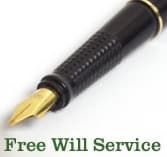Telephone fundraising, part 2: how to use the phone across different programmes
- Written by
- Bethan Holloway
- Added
- May 25, 2012

In part one we looked at why the phone is a great fundraising tool. Now we'll look at how the phone can be used to drive performance of all sorts of different fundraising programmes – from donor acquisition through to legacies.
The phone can be used to enhance any fundraising programme. Major donor and corporate fundraisers have used the it to build personal one-to-one relationships for years; and agencies, such as Pell & Bales, have been used to reach larger audiences, most commonly within individual giving. The telephone benefits from the ability to explain and ‘sell’ more complicated giving products so has traditionally been used to explain and drive regular giving, covenants, Gift Aid and legacy giving.
Now the phone is also being used to build engagement, commitment and loyalty and we are seeing rapid growth in it being used for event fundraising and loyalty programmes. Here is my overview of campaigns every charity should consider.
Upgrading existing regular giving donors

Asking donors to increase the value of their gift is an opportunity not just to raise money, but to make contact with your regular donors to update them on how their gift is helping: the impact it has.
Regular giver reactivation
Lapsed regular givers should be asked why they stopped so the fundraiser can deal with any dissatisfaction or concerns, which will often bring the supporter back on board, possibly at a lower amount than they were giving previously. Reactivation and upgrade activity will deliver some of the strongest response rates and ROIs of all telemarketing (TM) activity.
Legacy
Encouraging donors to leave a gift in their will cannot be done in a single conversation. You should talk with your legacy prospects regularly to guide them through the decision-making process. Consider offering them the opportunity to ask you for information on making a will, in order to inspire the idea of leaving a legacy. Then make sure you look after them well, contact them regularly, answer their questions or concerns and provide any additional information they may want.
Gift Aid

You can increase Gift Aid penetration of your file quickly with a short phone call. The phone is particularly good for targeting those who seem to ignore the Gift Aid ask on donation forms (those that actively avoid thinking about ‘scary and complicated’ tax affairs). I would also recommend calling ‘non-taxpayers’ on your database to see if their situation has changed and to clarify that they definitely don’t pay any form of income tax.
Event fundraising
- You can increase participation in events by telephoning donors and prospects and asking them to register.
- Look after – steward – those that have already registered with ‘support calls’ to encourage and support their fundraising efforts and increase average sponsorship values.
- Deliver post event calls to donors who haven’t sent in their sponsorship donations.
Cold calling
This is tough and an area in decline. For those with a strong brand and happy to wait several years for the activity to break even it is still a viable option, though the availability of quality data lists at volume is still a challenge.
Two-stage recruitment

The limited availability of cold data (along with a decline in performance of other acquisition channels over the years) has led charities to develop two-stage strategies. First they build their own pool of prospects from people who have shown an interest in their organisation either by taking part in an event, signing a petition, buying from a catalogue, or some other activity. Second, they phone them to ask if they would consider making a financial donation.
SMS micro giving, talking to people on the street and campaigning are all proven ways of finding prospects. More recently, technology allows charities to gather information on visitors to their website for potential conversion to actual donors.
Database names
Before embarking on any cold activity I would urge you to first audit your database and determine what prospects and supporters you already have sitting on your file. This data is free, and pre-disposed to supporting your cause, so perfect for calling with a conversion ask. Most charities are sitting on a goldmine of data, whether its traders, campaigners, people asking for information, event participants, Just Giving sponsors…
Cash conversion
The phone is commonly used to approach new, active and lapsed cash donors to ask them to convert to regular giving. Use expert fundraisers to explain to your supports just why regular gits are so valuable.
Loyalty and stewardship
If you structure a conversation around the known drivers of commitment and loyalty you will see significant improvements in retention rates. Or you can use the phone to ask your donors to complete a survey on how satisfied they are with your organisation. This will improve your communications and loyalty programmes in terms of building a relationship.
Regular giving through mobile phones
A very exciting growth area and the next best thing since the direct debit! At Pell & Bales we work with Cymba to deliver Connected, a platform that allows supporters to take control of their monthly SMS gift direct from their mobile phone and delivers engaging content to that very same hand-set.
Cash appeals
Mid- to high-value and capital appeals can work well on the phone. However, it can be a struggle to make lower value cash asks break even, so it is best to combine the phone call with a letter when targeting lower value donors. You should allow for a much shorter phone call and, therefore, a lower call cost. This is a great way to give your fundraising a fast and significant cash injection, so is popular at the end of the year and in emergencies.
Emergency fundraising
The phone can’t be beaten when a rapid response is needed. At Pell & Bales we work with several disaster relief organisations and have several ‘on the shelf’ campaigns that are ready to call within hours of disaster striking.
Phew! That completes my whistle-stop tour of campaign types. There is so much more to say about each of these fundraising areas, but I hope I have given you some ideas about how you could use the telephone to raise more money for your organisation.
Look out for the third and final part of the series: the basics ofdesigningand executinga telephone campaign.

















